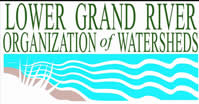Lower Grand Watershed Interactive Tool (WIT) - Thermal Pollution


Thermal pollution is an elevation in water temperature that stresses fish and aquatic species.
What is it?
Thermal pollution (temperature) is when a water body is greatly influenced by an influx of water above or below its natural temperature, usually making the water warmer. Generated by development (direct and indirect discharges, lack of stream canopy, deforestation) and farming (water withdrawals reducing stream depth, water inputs from agricultural drains, lack of stream canopy), thermal pollution can result in increased water temperatures and reduced dissolved oxygen levels.
Why is it Harmful to Water Bodies?
Thermal pollution is detrimental to the aquatic life in the water body, especially if the water temperature historically supported a cold-water fishery and can no longer do so because of the temperature increase. To be considered a cold-water stream, the average range of temperatures during July must be from 14° to 19° C (41° to 55° F) and a warm water stream ranges from 22° to 26° C (68° to 77° F) (Creal and Wuycheck, 2002).
What are Causes for Thermal Loading?
Development will continue to increase as more access is made available due to new highway construction. As the human population continues to grow in the watershed and the land in the watershed is further developed, the amount of warm water introduced from to stormwater and impervious surfaces will increase. Industrial discharges, wastewater effluent, and septage system discharges will also increase.
Agriculture covers most of the watershed; thus it will be affecting the watershed for a long time. Exposed drainage ditches are an obvious concern as they are suspected of adding warmer water to the river system. Due to a lack of best management practices, stormwater runoff from many agricultural fields is thought to have an impact on water temperature.
Not only is warm water added to this watershed, but also the cold springs that have fed it with fresh groundwater are not being protected and are threatened by development. The water in the river and creeks once flowed in tree-covered paths that also helped to maintain a cool water stream system. Throughout the watershed, canopy cover has been removed and the water is exposed to the sun heightening the temperature and lowering the dissolved oxygen.
